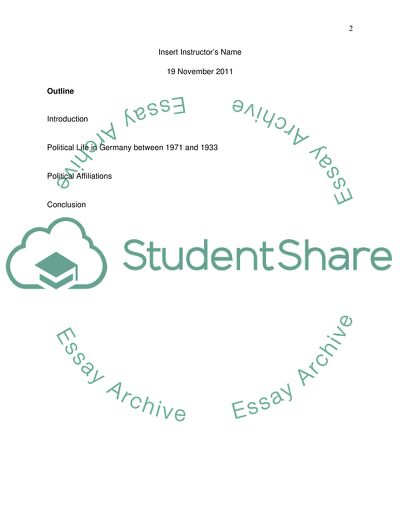Cite this document
(Political Life in Germany in1871-1933 Essay Example | Topics and Well Written Essays - 2250 words, n.d.)
Political Life in Germany in1871-1933 Essay Example | Topics and Well Written Essays - 2250 words. https://studentshare.org/history/1761311-to-what-extent-did-political-life-in-germany-between-1871-and-1933-reflect-the-segmented-nature-of-german-society
Political Life in Germany in1871-1933 Essay Example | Topics and Well Written Essays - 2250 words. https://studentshare.org/history/1761311-to-what-extent-did-political-life-in-germany-between-1871-and-1933-reflect-the-segmented-nature-of-german-society
(Political Life in Germany in1871-1933 Essay Example | Topics and Well Written Essays - 2250 Words)
Political Life in Germany in1871-1933 Essay Example | Topics and Well Written Essays - 2250 Words. https://studentshare.org/history/1761311-to-what-extent-did-political-life-in-germany-between-1871-and-1933-reflect-the-segmented-nature-of-german-society.
Political Life in Germany in1871-1933 Essay Example | Topics and Well Written Essays - 2250 Words. https://studentshare.org/history/1761311-to-what-extent-did-political-life-in-germany-between-1871-and-1933-reflect-the-segmented-nature-of-german-society.
“Political Life in Germany in1871-1933 Essay Example | Topics and Well Written Essays - 2250 Words”. https://studentshare.org/history/1761311-to-what-extent-did-political-life-in-germany-between-1871-and-1933-reflect-the-segmented-nature-of-german-society.


